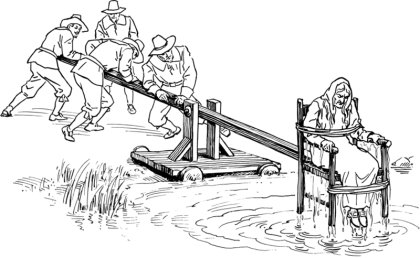Despite all our science and engineering, the end-of-life strategies for dealing with mixed waste are often very simplistic. Under current conditions it seems it isn’t economically viable to pick over every bit of waste that a household generates in a week, sorting everything by material and sending it for recycling. One problem is that hand-picking is a filthy, even dangerous job. Waste sorting involves picking through things like soiled diapers and rotten meat with the possibility of finding dangerous items like razor blades, or worse… horrific! In many communities, we leave the job to machinery.
There are such things as trash-sorting robots, and they’re getting better, but they are very expensive. Until some kind of breakthrough in automatic waste picking occurs, the mechanised approach involves relatively crude, broad-brush approaches that are more affordable. The first of these should be obvious: use an electromagnet to gather up ferrous materials, and send them for recycling. (Of course, some waste products will consist only partially of iron or steel; if this is an issue you need to disassemble (more likely crush or shred) the waste before sorting.
You can induce eddy currents in the non-ferrous metals that remain in the waste stream, causing them to move within a strong magnetic field: basically, anything conductive flies off a conveyor belt, while the non-metallic remainder drops into a bin.
So what’s left in the mixed waste stream? Everything that isn’t metal: stones, glass, mouldy food, plastic, bits of wood… whatever. There is still a lot of separation to be done. This is where the endearingly-named Witch Test comes in, which is simply this:
If it floats, burn it.
Ordeal by water was a common feature of the witch-hunts of the 16th and 17th century (although it originated much earlier) and it’s this practice that gives us such a colourful name for the separation of waste by density – perhaps influenced in part by a certain Monty Python scene.
Items that are light enough to float on water are likely to be combustible… so the Witch Test suggests that you simply dump your waste into a tank of water, and skim off anything at the surface, to burn for energy recovery. This reclaimed mixture is called Refuse Derived Fuel (RDF) and is readily used in power stations that otherwise burn fossil fuels. Nowadays, technology offers alternative methods for separating out the lighter materials: most approaches now use a blower (an “air knife”) instead of floatation, and this is preferable because dry RDF is lighter and thus cheaper to transport, so it appears that the Witch Test might soon disappear from the waste processing lexicon.
I’ll miss it.
Modern instruments of torture that your waste might encounter include the waste autoclave: a pressure vessel (or continuous process) employing saturated steam at around 160°C that ‘cooks’ the waste, killing bugs and causing paper and fibrous materials to break down completely (they are thus readily sifted out), while driving out moisture and causing the volume of the waste to reduce.
Also, I haven’t mentioned the biological approaches that can be employed; composting and anaerobic digestion. This is very much a buffet of technologies, with different companies each employing a subset of these sorting and treatment technologies, in different sequences. There really is no single preferred approach.
Whatever approaches to waste separation are used, an awful lot of work is required to re-establish some kind of order from the chaos of a mixed waste stream, and the sad thing here is that many of the materials in the waste stream are potentially very valuable… at least until they get co-mingled and contaminated.


Pingback: Meet the Monstrous Hybrid | Capacify